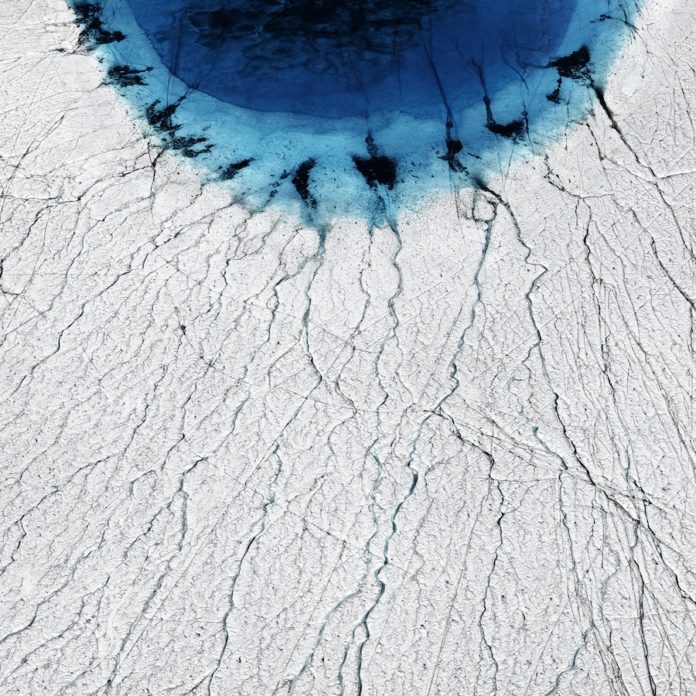Lakes on the surface of the Greenland ice sheet each late spring as the climate warms. Numerous exist for a considerable length of time or months, yet deplete in only a couple of hours through in excess of a kilometer of ice, exchanging gigantic amounts of water and warmth to the base of the ice sheet. The influenced territories incorporate delicate areas of the ice sheet inside where the effect on ice stream is conceivably vast.
Already, it had been believed that these ‘drainage events’ were segregated occurrences. Now a new research at the University of Cambridge along with the scientists from the UK, Norway, US, and Sweden, suggests that the lakes form a massive network and become increasingly interconnected as the weather warms. When one lake drains, the water quickly spreads under the ice sheet, which response by flowing faster.
The speedier stream opens new breaks at first glance and these cracks go about as courses for the waste of different lakes. This begins a chain response that can deplete numerous different lakes, some to the extent 80 kilometers away.
The examination shows how powers inside the ice sheet can change unexpectedly starting with one day then onto the next, making strong ice crack all of a sudden. The model created by the universal group demonstrates that lakes shaping in stable territories of the ice sheet deplete when cracks open in light of a high elastic stun constrain acting along waste ways of water streaming underneath the ice sheet when different lakes deplete far away.
The results are reported in the journal Nature Communications.
Lead author Dr Poul Christoffersen, from Cambridge’s Scott Polar Research Institute said, “This growing network of melt lakes, which currently extends more than 100 kilometres inland and reaches elevations as high a 2,000 metres above sea level, poses a threat for the long-term stability of the Greenland ice sheet.”
“This ice sheet, which covers 1.7 million square kilometers, was relatively stable 25 years ago, but now loses one billion tonnes of ice every day. This causes one millimeter of global sea level rise per year, a rate which is much faster than what has predicted only a few years ago.”
The study also suggests that meltwater delivered to the base of the ice sheet through draining lakes, in fact, drives episodes of sustained acceleration extending much farther into the interior of the ice sheet than previously thought.
Christoffersen said, “Transfer of water and heat from the surface to the bed can escalate extremely rapidly due to a chain reaction. In one case we found all but one of 59 observed lakes drained in a single cascading event. Most of the melt lakes drain in this dynamic way.”
During the study, scientists high-resolution satellite images to confirm that fractures on the surface of the ice sheet open up when cascading lake drainage occurs. This aspect of the work is quite worrying but scientists found a clear evidence of these crevasses at 1,800 meters above sea level and as far 135 kilometers inland from the ice margin.
Although the delivery of small amounts of meltwater to the base of the ice sheet only increases the ice sheet’s flow locally, the study shows that the response of the ice sheet can intensify through knock-on effects.
Co-author Dr Marion Bougamont, also from the Scott Polar Research Institute said, “The transformation of forces within the ice sheet when lakes drain is sudden and dramatic. Lakes that drain in one area produce fractures that cause more lakes to drain somewhere elsewhere. It all adds up when you look at the pathways of water underneath the ice.”
